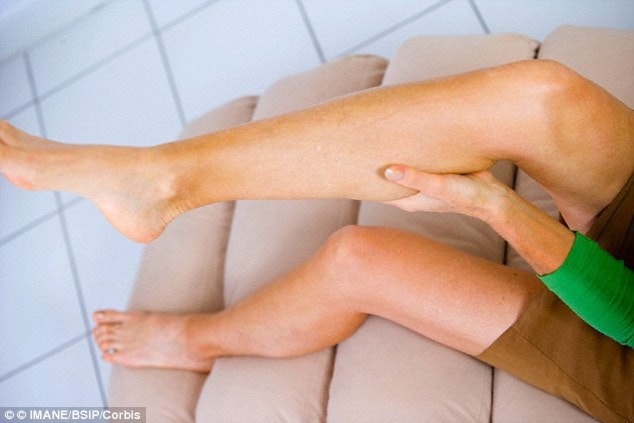A week rarely goes by without one of my senior citizen fitness clients complaining of leg cramps and wondering how to find relief.
Leg cramps are painful involuntary contractions or spasms of muscles in your legs usually involving your calf muscles, although muscles in your feet or thighs may cramp as well.
According to neurologist Dr. Robert Miller, leg cramps are related to muscle fatigue and nerve problems.
As we get older our muscles and nerves function less effectively.
Muscles get more weak and small and nerves wear out with the tissue becoming thin.
When that happens, the connection that the nerves make it to the muscle becomes less secure.
Cramps occur at the place where nerves meet muscle.
When the brain sends a signal for the muscle to move, the signal has to cross through tiny nerve terminals.
Excessive signalling and excessive irritability, which may result from thinning and weakened nerves, seems to be the generator for cramping.
Other causes of leg cramps in older adults are associated with some medications, electrolyte imbalance and dehydration, and some diseases, such as diabetes due to nerve damage and kidney failure.
Diuretics, commonly known as “water pills,” help your body get rid of unneeded water and salt through the urine.
Getting rid of excess salt and fluid helps lower blood pressure and can make it easier for your heart to pump.
Diuretics may be used to treat a number of heart-related conditions, including high blood pressure, heart failure, kidney and liver problems
Often time diuretic medications are associated with an increased loss of calcium and magnesium they can also cause sodium and potassium depletion.
Many patients who use diuretics happen to also be on low sodium restricted diets.
Therefore it is important to pay careful attention to the effects of diuretics on sodium and potassium and replacement of these elements as needed.
Another common cause of cramps is that older adults often do not hydrate themselves adequately likely because their sense of thirst diminishes with age.
Often just drinking more fluid will help reduce cramping.
The exact cause of cramps can be difficult to determine but the best prevention includes exercising, staying hydrated, talking to your doctor about side effects of medication, potentially needed vitamin and mineral supplements
Additional ways you may prevent cramping include:
• Apply heat or cold. Use a warm towel or heating pad on tense or tight muscles.
• For a cramp in the calf or a cramp in the back of the thigh (hamstring), try putting your weight on the affected leg and bending your knee slightly, or sit or lie down with your leg out straight and pull the top of your foot toward your head.
• For a cramp in the front of the thigh (quadriceps), hold onto a chair to steady yourself and pull your foot back toward your buttock.
• Eating a banana a day provides electrolytes with its magnesium potassium and calcium.
• Stretching or riding a stationary bike a few minutes before going to bed will stretch the calf and hamstring muscles.
• Untucking the bed covers at the foot of your bed.
• Massaging the cramping area.
Bobbi Moger is a seniors’ fitness specialist in Kelowna.
250-317-3508
